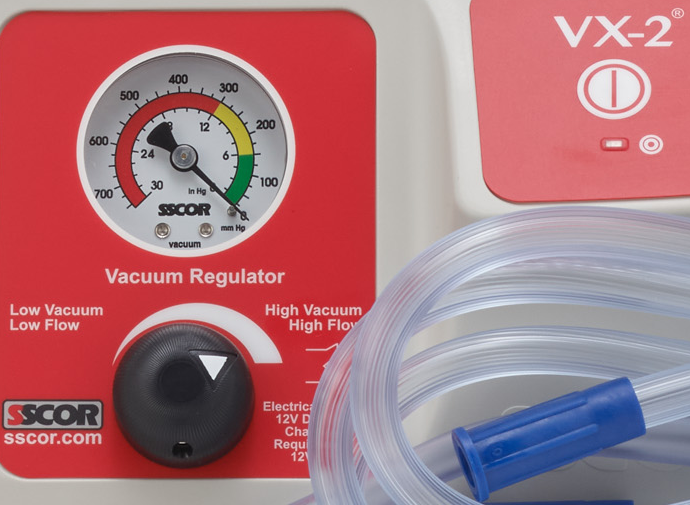
Airway suctioning is necessary in a variety of emergency situations. However, the success of this method is largely dependent on how well your team tailors their suctioning strategies to each patient’s age and health conditions. Learning and practicing the right techniques for working with each patient type will help your team prepare for a range of possible complications that may arise when treating diverse patient populations.
Preparing for suctioning
Before performing any airway suctioning, it’s essential that you first identify the patient’s age, condition and the particles or fluids that need to be cleared from their airway. Proceeding without that information will put your patient at an even greater risk for injury, trauma or death.
To help your team prepare for all possible scenarios, we’ve identified suctioning techniques and equipment that are ideal for each patient type:
For an adult patient with an endotracheal tube
Selecting the right equipment size is vital in any suctioning scenario. When treating an adult patient with an endotracheal tube, you should use a catheter that is no larger in diameter than one-half the diameter of the endotracheal tube.
Additionally, unlike working with non-intubated patients, you should employ shallow suctioning, as this will generally lead to less adverse results. If the patient is receiving high amounts of fraction of inspired oxygen (FiO2) or positive end-expiratory pressure (PEEP), you should perform closed suctioning to avoid interrupting oxygenation or ventilation. If secretions are present in the airway, you should suction using a sterile technique for less than fifteen seconds.
For a non-intubated adult patient
When treating a non-intubated adult patient, it’s critical that you use a sterile, flexible, multi-eyed catheter that is lubricated with saline or a water-based lubricant. The catheter should then be connected to a sufficient vacuum source, such as an in-wall or portable suction machine. If you need to clear the patient’s oropharynx during resuscitation, try using a wide diameter, rigid suction catheter for removing thick secretion.
For a neonate
Treating the airway of a newborn can be particularly challenging, and if suctioning is not performed correctly, it could pose tremendous danger to any newborn. There are several scenarios that require emergency suctioning for newborns, but the World Health Organization advises against routine suctioning in the minutes shortly after birth.
For a non-intubated neonate
Medical personnel should never perform suctioning on a baby that is born through clear amniotic fluid and is able to breathe on their own after birth. Suctioning should only be performed if a newborn exhibits signs of respiratory distress, including increased CO2, increased oxygen needs, bradycardia and apnea, audible breathing, gasping or wheezing, visible secretions or aspiration.
Unlike the larger sizes used for adult patients, when treating a neonate, you should use a suction catheter with a diameter that is less than 70% of the diameter of the endotracheal tube. It is recommended that you employ a closed suctioning technique and avoid disconnecting from the ventilator at any point during treatment. Overall, medical personnel treating newborns should always opt for more narrow catheters and machines with reliable and easily adjustable suction mechanisms.
The right tools
Safely clearing the airway through suctioning is a necessary treatment in many patient scenarios, but without knowledge of a patient’s unique needs, your suctioning efforts could be unsuccessful and, in some cases, life-threatening.
To begin, medical personnel must be properly equipped, and SSCOR has a wide range of suction products meant for hospital or EMS use. To learn more about the best equipment practices based on different patient factors, check out Clearing the Airway: Choosing the Right Suction Strategy for the Right Patient.













